| |||||
| Decades: | |||||
|---|---|---|---|---|---|
| See also: | |||||

The following lists events that happened during 1953 in the Union of Soviet Socialist Republics .
| |||||
| Decades: | |||||
|---|---|---|---|---|---|
| See also: | |||||

The following lists events that happened during 1953 in the Union of Soviet Socialist Republics .
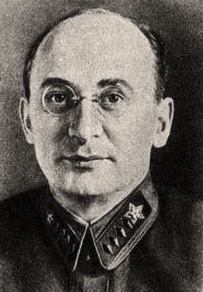
Lavrentiy Pavlovich Beria was a Georgian Bolshevik and Soviet politician, Marshal of the Soviet Union and its state security administrator and chief, and chief of the People's Commissariat for Internal Affairs (NKVD) under Joseph Stalin during the Second World War, and promoted to deputy premier under Stalin in 1941. He officially joined the Politburo in 1946. Beria was the longest-serving and most influential of Stalin's secret police chiefs, wielding his most substantial influence during and after the war. Following the Soviet invasion of Poland in 1939, he was responsible for organizing purges such as the Katyn massacre of 22,000 Polish officers and officials.

1953 (MCMLIII) was a common year starting on Thursday of the Gregorian calendar, the 1953rd year of the Common Era (CE) and Anno Domini (AD) designations, the 953rd year of the 2nd millennium, the 53rd year of the 20th century, and the 4th year of the 1950s decade.
Marshal of the Soviet Union was the second-highest military rank of the Soviet Union. Joseph Stalin wore the uniform and insignia of Marshal after World War II.

An index of articles related to the former nation known as the Soviet Union. It covers the Soviet revolutionary period until the dissolution of the Soviet Union. This list includes topics, events, persons and other items of national significance within the Soviet Union. It does not include places within the Soviet Union, unless the place is associated with an event of national significance. This index also does not contain items related to Soviet Military History.
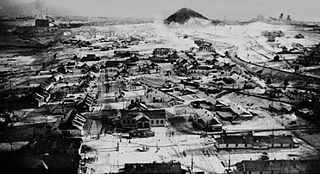
The Vorkuta Uprising was a major uprising of forced labor camp inmates at the Rechlag Gulag special labor camp in Vorkuta, Russian SFSR, USSR from 19 July to 1 August 1953, shortly after the arrest of Lavrentiy Beria. The uprising was violently stopped by the camp administration after two weeks of bloodless standoff.
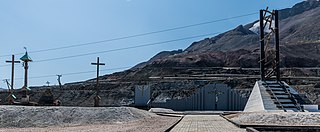
Norillag, Norilsk Corrective Labor Camp was a gulag labor camp set by Norilsk, Krasnoyarsk Krai, Russia and headquartered there. It existed from June 25, 1935 to August 22, 1956.
The Norilsk uprising was a major strike by Gulag inmates in Gorlag, a MVD special camp for political prisoners, and later in the two camps of Norillag [ITL], Norilsk, USSR, now Russia, in the summer of 1953, shortly after Joseph Stalin's death. About 70% of inmates were Ukrainians, some of whom had been sentenced for 25 years because of MGB accusations of being involved in the "Bandera standard". It was the first major revolt within the Gulag system in 1953–1954, although earlier numerous cases of unrest in Gulag camps are known. It was led by Pavel Frenkiel in 1st camp, by Boris Shamaev in 3rd camp, by Yevhen Hrytsyak in 4th camp, by Pavel Filnev in 5th camp and by Lesya Zelenska in 6th camp.
The following lists events that happened during 1941 in the Union of Soviet Socialist Republics.
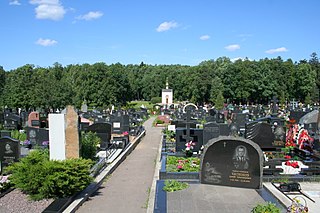
The Troyekurovo Cemetery, alternatively known as Novo-Kuntsevo Cemetery, is a cemetery in Moscow, Russia.

The Government of the Union of Soviet Socialist Republics (USSR) was the executive and administrative organ of the highest body of state authority, the All-Union Supreme Soviet. It was formed on 30 December 1922 and abolished on 26 December 1991. The government was headed by a chairman, most commonly referred to as the premier of the Soviet Union, and several deputy chairmen throughout its existence. The Communist Party of the Soviet Union (CPSU), as "The leading and guiding force of Soviet society and the nucleus of its political system" per Article 6 of the state constitution, controlled the government by holding a two-thirds majority in the All-Union Supreme Soviet. The government underwent several name changes throughout its history, and was known as the Council of People's Commissars from 1922 to 1946, the Council of Ministers from 1946 to 1991, the Cabinet of Ministers from January to August 1991 and the Committee on the Operational Management of the National Economy from August to December 1991.
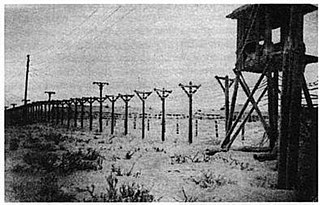
The Vorkuta Corrective Labor Camp, commonly known as Vorkutlag (Воркутлаг), was a major Gulag labor camp in the Soviet Union located in Vorkuta, Komi Autonomous Soviet Socialist Republic, Russian Soviet Federative Socialist Republic from 1932 to 1962.
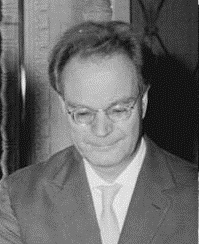
Mikhail Georgiyevich Pervukhin was a Soviet official during the Stalin Era and Khrushchev Era. He served as a First Deputy Chairman of the Council of Ministers, literally First Vice-Premier of the Soviet Union, from 1955 to 1957.
The following lists events that happened during 1936 in the Union of Soviet Socialist Republics.

The Premier of the Soviet Union was the head of government of the Union of Soviet Socialist Republics (USSR). Twelve individuals held the post. Among the most known are Vladimir Lenin and Joseph Stalin.
The following lists events that happened during 1924 in the Union of Soviet Socialist Republics.
The following lists events that happened during 1926 in the Union of Soviet Socialist Republics.
The following lists events that happened during 1927 in the Union of Soviet Socialist Republics.
The following lists events that happened during 1950 in the Union of Soviet Socialist Republics.
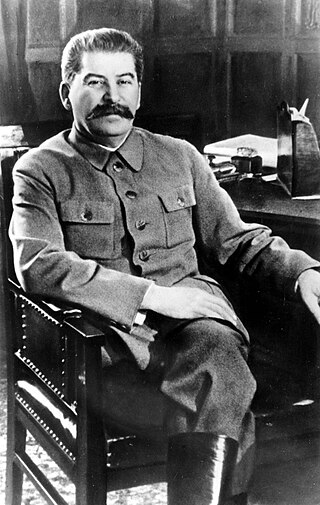
The following events occurred in March 1953:
{{cite web}}: CS1 maint: unfit URL (link)